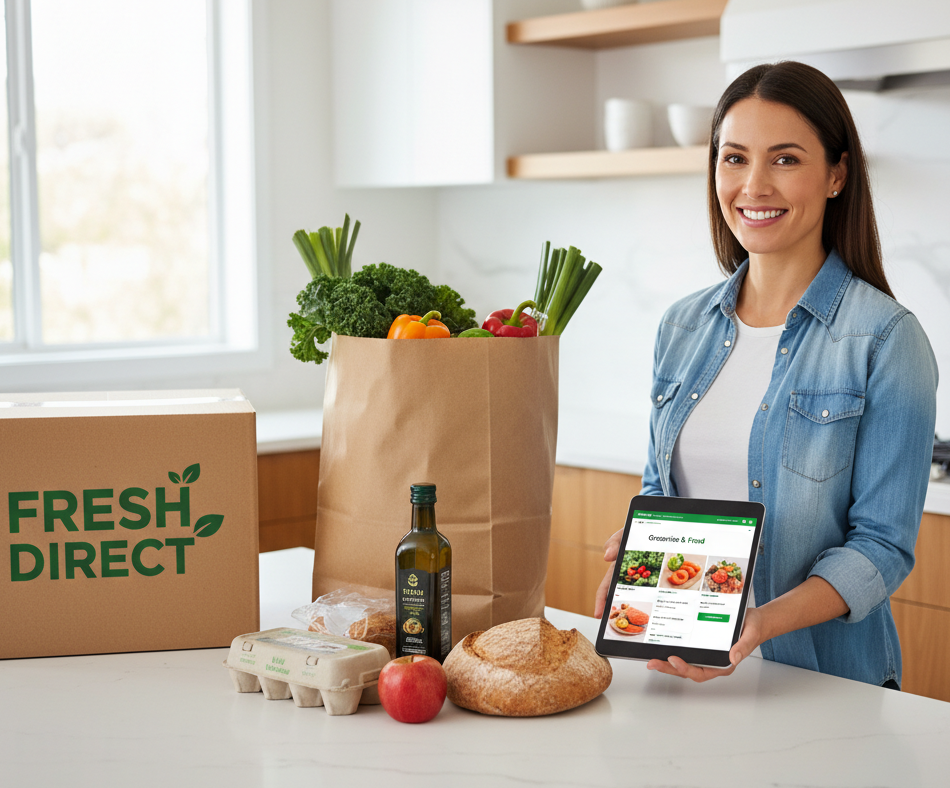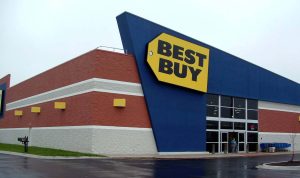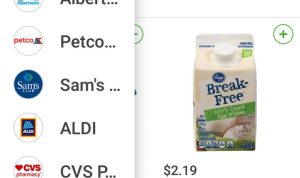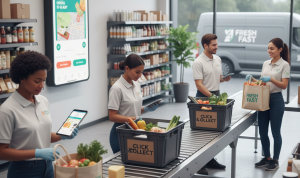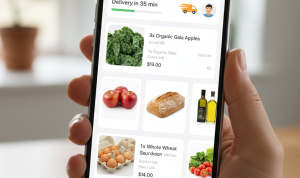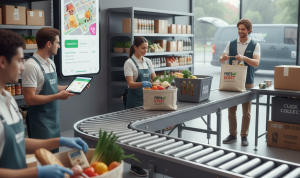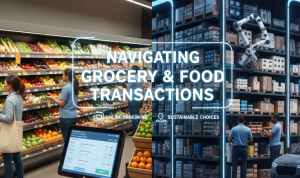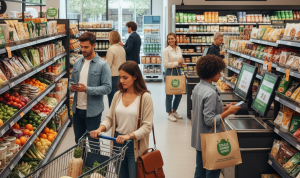A few decades ago, the idea of ordering a week’s worth of groceries from a computer and having them appear at your front door would have sounded like science fiction. Today, it’s a standard convenience for millions of people worldwide. The online groceries and food market has undergone a seismic shift, transforming from a niche service into a multi-billion dollar industry that is redefining consumer behavior and retail strategy.
This article explores the rise of the digital grocery market, the key players driving its growth, and the trends shaping its future. We’ll look at why more people are choosing to shop for food online, what makes a great grocery e-commerce experience, and what’s next for this dynamic sector.
The Rise of Online Grocery: A Story of Convenience and Necessity
The initial seeds of the online groceries movement were planted in the late 20th century, but the market truly exploded in recent years. The global pandemic acted as a major catalyst, forcing consumers to find new, safe ways to shop for essentials. This period of forced adoption turned millions of first-time online grocery shoppers into repeat customers.
However, the growth wasn’t just a reaction to a crisis; it was a natural progression driven by a number of powerful consumer trends:
- Unmatched Convenience: For busy professionals, parents, and anyone with a packed schedule, online grocery shopping saves a tremendous amount of time. You can build your shopping list throughout the week, place an order with a few clicks, and have it delivered directly to your home.
- Accessibility: Online services have become a lifeline for individuals with mobility issues, the elderly, and those living far from a physical supermarket. It removes the barriers of travel and physical shopping, making fresh food accessible to a wider population.
- Wider Selection: E-commerce platforms aren’t limited by physical shelf space. This allows them to offer an incredibly diverse range of products, from local farm-to-table produce to international specialty items that might not be available at a local store.
This shift has also been beneficial for retailers. E-commerce allows them to gather vast amounts of data on customer preferences, enabling them to offer personalized recommendations, targeted promotions, and a more tailored shopping experience.
Key Players and Business Models
The online grocery landscape is a vibrant ecosystem with a variety of players, each with a unique approach to the market.
1. Traditional Supermarkets Going Digital: Established supermarket chains like Kroger, Walmart, and Sainsbury’s have successfully integrated e-commerce into their operations. They leverage their existing infrastructure—their vast network of physical stores—to offer services like online ordering for in-store pickup (click-and-collect) and local delivery. This model allows them to maintain a strong brand presence and capitalize on their well-known supply chains.
2. Dedicated E-commerce Grocers: Companies like Ocado in the UK have built their business model entirely around online grocery. They operate from highly automated, robotic warehouses (known as Customer Fulfillment Centres) designed to pick and pack orders with incredible efficiency. This high-tech approach minimizes errors and ensures a smooth, fast delivery process.
3. Third-Party Delivery Services: Platforms like Instacart and Shipt act as intermediaries, connecting customers with personal shoppers who pick up items from local stores and deliver them. This model offers a vast selection of retailers and a high degree of flexibility. It’s especially popular for those who need items quickly, often within a few hours.
4. Specialty and Subscription Services: The market also includes niche players that cater to specific dietary needs or lifestyles. Thrive Market focuses on organic and healthy foods, offering a membership-based model for discounted prices. HelloFresh and Green Chef pioneered the meal-kit delivery service, sending pre-portioned ingredients and recipes directly to customers’ homes, blending convenience with the joy of home cooking.
What Makes a Great Online Grocery Website?
A successful online grocery platform is about more than just a list of products. The best websites prioritize user experience (UX) to make the digital shopping trip as seamless as possible.
- Intuitive Navigation and Search: A user should be able to find what they need quickly, whether by browsing well-organized categories or using a powerful search function that understands natural language.
- High-Quality Product Information: Crisp, clear images and detailed product descriptions are essential. For fresh produce, information on seasonality, origin, and even serving suggestions can significantly enhance the shopping experience.
- Personalization: Websites that use AI and machine learning to offer personalized recommendations—based on past purchases, dietary preferences, and shopping history—create a more engaging and efficient user journey.
- Clear and Flexible Fulfillment Options: Customers want to know when and how their order will arrive. The ability to choose between same-day delivery, scheduled delivery, or in-store pickup is a crucial feature.
- Transparent Pricing and Promotions: Displaying prices clearly, including any delivery fees or service charges, builds trust. Websites that highlight ongoing sales, weekly circulars, and loyalty program benefits keep customers coming back.
The Future of Online Grocery: Beyond the Basics
The digital grocery market is still evolving rapidly. Here’s a glimpse into the future:
- Enhanced Personalization: Expect to see even more sophisticated AI at play. Your online grocery list might be auto-populated with your usual items, or you could receive recipe suggestions based on what’s in your digital cart.
- Sustainable Practices: As environmental concerns grow, online grocers will increasingly focus on reducing food waste, optimizing delivery routes to lower carbon emissions, and offering more sustainable packaging options.
- Integrating with Smart Home Technology: Imagine your smart refrigerator automatically adding milk to your online shopping cart when it runs low, or your voice assistant allowing you to add items to your list simply by saying them aloud. This is the next frontier of hyper-convenience.
- The rise of “Quick Commerce”: The demand for instant gratification is driving the growth of “quick commerce” services, where smaller orders are delivered in a matter of minutes. This will push logistics and delivery technology to new levels of efficiency.
In conclusion, the digital revolution in groceries is far from over. As technology continues to advance and consumer expectations shift, the market will become even more innovative, personalized, and integral to our daily lives. The days of weekly trips to the physical store are not gone, but they are increasingly being supplemented—and in many cases, replaced—by the convenience of the digital cart.

